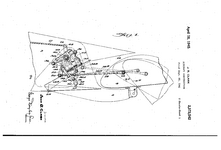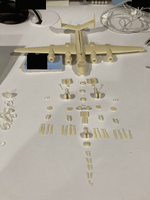- Thread starter
- #21
I agree it's a very interesting aircraft (and quite a looker!). Regarding the bombload and weight... In a way, yes, it is a lot of plane for a small bombload. I don't remember if I have clearer diagrams, but that (admittedly hard to read) bombload diagram does list 24 x 500 lb, 8 x 1000 lb and 6 x 2000 lb loads, which for a plane that size isn't that bad, but is still a bit substandard. iirc the increasing weight of the design (it gradually went from a 94 ft wingspan to a 134 ft wingspan) was a reason in its cancellation. It's the same bomb capacity as a Lib in a time of Superfortresses and Dominators; just really not very necessary. I don't recall if its range rivaled the Lib or not.Very interesting idea for a plane. As a practicality, a lot plane for such a small bomb load.

















